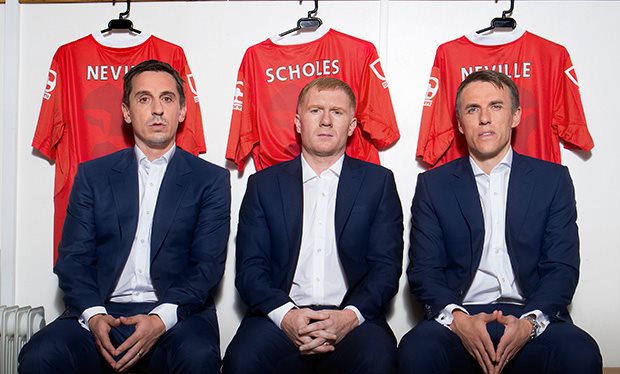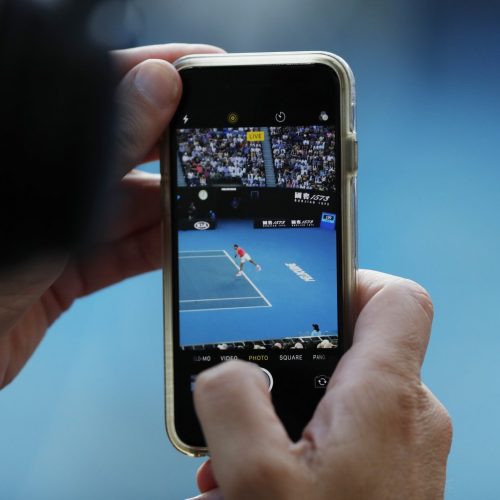Social Media, Digital tech and football in the modern age
Guest article: Alex Fenton is a lecturer in digital business and award winning digital developer and trainer, running courses at MediaCityUK, University of Salford.
Bandwagon jumpers, plastic fans, armchair supporters, glory hunters, fair weather fans, flaneurs, part-timers, casuals. These are just some of the phrases used to describe followers of football around the world. Man Utd caused some controversy in 2012 by announcing the results of research showing that they had 659 million followers around the world.
The truth of the matter is that football and its support is changing and disruptive digital technologies are playing a significant part in this change. Social media platforms such as Twitter, Facebook and YouTube in particular are enabling new kinds of fan. They are opening up a world of choice where it is possible to support multiple clubs from wherever and whenever you like.
Once upon a time, people grew up in a town or city and they adopted whichever sporting club their friends and family supported and that was more or less it for life. Whilst people had a passing interest in other clubs in other parts of the world – following them from out of town was difficult. Whilst the local clubs for local people is still very much alive – people now have a vast choice of international options for who and how to support a football club.
One example of this is the Italian World cup in 1990. English stars Paul Gascoigne, Paul Ince, David Platt had a great tournament and were signed up by clubs in Italy’s Serie A. It was then possible to watch Serie A and the English stars on TV in England, opening up a whole new world of possibility. Suddenly, people in England were buying and wearing Italian football shirts and following the league from a distance. The social capital of Gascoigne and co. matched up with significant media coverage suddenly meant that kids now had a Juventus or Lazio shirt in their drawer in addition to their collection of shirts and posters for their favourite local English club. The growth of the top European leagues and the movement of international players, continues this trend. Relationships matter.
A quarter of a century on, aside from TV, we have now experienced an explosion in Internet communications. There are approximately 2.6 billion smartphone users in the world with people from around the globe interactive on various social media platforms. What this means in effect is that fans are no longer constrained to their living room or the local bar to watch football from out of town. They are no longer boxed in to whatever rights the TV broadcaster (or the local bar) decides to show. Football clubs are often late adopters of technology and social media was no exception. Facebook execs famously had to convince Christino Ronaldo’s management team that he might get ten million followers on the worlds biggest social network. They replied “We don’t believe you. That’s the size of Portugal”. In Sept 2016, Cristiano has over 116 million likes on Facebook and over 46 million followers on Twitter – combined, that’s more than the population of Russia, the 9th most populous country on the planet.
Even small, non-league football clubs now have a significant following on social media, which often far outweighs the numbers of people that turn up to watch the club live. The explosion of broadband, affordable high quality digital cameras and social media apps means that practically anyone, anywhere can turn any club at any level into a social media outlet. Good examples of this are FC United (FCUM) and Salford City FC (SCFC) who are non-league English clubs plying their trade in the National League North. FC United are the largest fan owned club in the UK. Bucking the trend as late adopters of technology, FCUM have embraced technology and the social media capital that comes with it. They offer free WIFI in their stadium, FCUM TV and have used social media to great effect to attract fan owners and achieve some of the highest match attendances in non-league football. They are embracing new and disruptive social media platforms such as Wakelet.
Salford City FC are another interesting case. A couple of years ago, they were like any other non-league English football club. They had a Twitter account, Facebook, a forum and about 100 people turning up to games on a good day. In the 2014/15 season, when SCFC were in the 8th tier of English football, they were taken over by ex-Manchester United players known famously as “The Class of ‘92′. Since then, they have achieved two promotions in two seasons, a BBC TV documentary series and a stellar FA Cup run also televised on the BBC. The net result of this is that the crowds have risen from 120 people to around 1500, but the social media following has risen many more times than this. Take Twitter as an example. The number of SCFC Twitter followers rose from a respectable 3,500 in the middle of 2014 to over 21,700 in around 3 weeks. This has now grown to 102,000 by the end of 2016.
Graph showing SCFC’s rise in Twitter followers from August to September 2016
Fans internationally have been following clubs from abroad for decades, thanks to global TV rights. Sometimes they are strongly connected superfans, sometimes, they have a passive interest and are weakly tied. The fact is though, that if a fan is following a club on social media, it is a connection. This connection can grow as the club grows. Social media means that the individual can interact with the club, other fans or their friends, which can help to develop a stronger connection with the club. Not only that, the more their connections discuss that club, the more the social media algorithms deliver more about it so that it dominates timelines, increasing the connection to the club.
So, as a core supporter, the new or armchair fan may sometimes be puzzling or frowned upon, but in terms of the success of the club – they have never been more important. What do you think? Are you a core fan, current fan or follower of more than one club? Perhaps you are a superfan following a club from afar on social media. I would love to hear from you either way.
About author
You might also like
Mallory Group Launches White Paper on the ‘New Normal’ for Sports Rights Holders
Sport is proving to be one of the high-profile business casualties of the Covid-19 pandemic. However, its slow and structured return will be a key factor in life entering the
The seven essentials for achieving successful sports branding
By Daniela McVicker When it comes to sports, great branding is a must. Your brand influences how people see your company or team. It helps you to forge connections with
Live Chat: A New Social Experience in Sports
Article written by John S. Kim, CEO and co-founder of global API company SendBird Social media rose to prominence throughout the world due to its potential for connection. Social channels provided the










